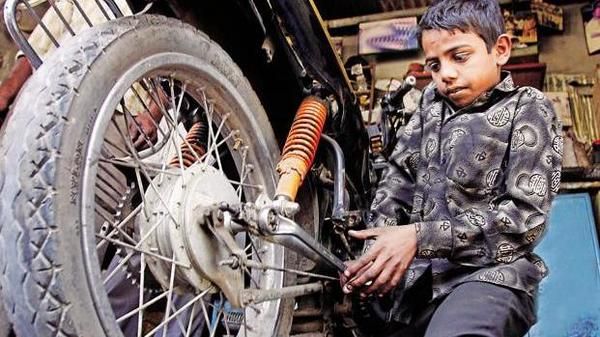Child Labour
Jun 14, 2019 • 10 views
Child labour refers to the exploitation of children through any form of work that deprives children of their childhood, interferes with their ability to attend regular school, and is mentally, physically, socially or morally harmful. Such exploitation is prohibited by legislation worldwide, although these laws do not consider all work by children as child labour; exception is include work by child artists, family duties, supervised training, and some forms of child work practiced by Amish children, as well as by Indigenous children in the America.

Systematic use of child labour was common place in the colonies of European powers between 1650 and 1950. In Africa, colonial administrators encouraged traditional kin-ordered modes of production, that is hiring a house hold for work not just the adults. Millions of children worked in colonial agricultural plantations, mines and domestics ervice industries. Sophisticated schemes were promulgated where children in these colonies between the ages of 5–14 were hired as an apprentice without pay in exchange for learning a craft.
The 2011 national census of India found the total number of child labourers, aged 5–14, to beat 10.1 million and the total child population to be 259.64 million in that age group. The child labour problem is not unique to India; worldwide, about 217 million children work, manyfull-time. India has legislation since 1986 which allows work by child reninnon-hazardous industry. In 2013, the Punjab and Haryana High Court gave a land mark order that directed that there shall be a total ban on the employment of children upto the age of 14 years, be it hazardous or non-hazardous industries. However, the Court ruled that a child can work with his or her family in family based trades/occupations, for the purpose of learning a new trade/craftsmanship or vocation.
Child labour status in different countries-
Africa
Children in Africa today are often forced in to exploitative labour duet of family debt and other financial factors,leading to on going poverty. Other types of domestic child labour include working in commercial plantations, begging, and other sales such as boot shining. In total, there is an estimated five million children who are currently working in the field of agriculture which steadily increases during the time of harvest.
Australia
Child labour laws in Australia differ from state to state. Generally, children are allowed to work at any age, but restrictions exist for children under 15 years of age. These restrictions apply to work hours and the type of work that children can perform. Inallstates, children are obliged to attend school until a minimum leaving age, 15 years of age in all states except Tasmania and Queensland where the leaving age is 17.
Soviet Union and Russia
Although formally banned since 1922, child labour was wide spread in the Soviet Union, mostly in the form of mandatory, unpaid work by school children on Saturdays and holidays. The students were used as a cheap, unqualified work force on kolhoz(collective farms) as well as in industry and forestry. The practice was formally called" work education"
Britain
By the end of the eighteenth century, 20 percent of the population was made up of children between the ages of 5 and 14. Due to this substantial shift in available workers, and the development of the industrial revolution, children began to work earlier in life in companies outside of the home. Yet, even thought here was an increase of child labour in factories such as cotton textiles, there were large numbers of children working in the field of agriculture and domestic production.
